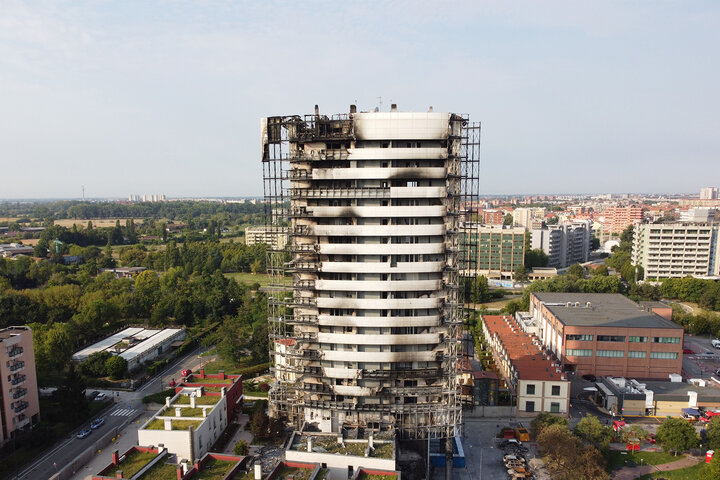Is there a threat of "imminent danger" with smoke protection pressure systems in existing buildings?
How things are with fire protection in high-rise buildings
07.12.2021

By definition, a building in Germany is considered to be a high-rise if its primary occupied spaces are more than 22 meters above the specified ground surface. Many of these were built before the 2000s and therefore no longer meet today's applicable fire protection requirements. The real estate consulting and planning office CANZLER, a company of the SOCOTEC Group, urgently advises to check smoke protection pressure systems with regard to their effectiveness and operational safety during any refurbishment of existing buildings.
Terrifying reports like this one make people sit up and take notice: At the end of August this year, a major fire devastated the 20-story Torre dei Moro apartment building in Milan. The fire had broken out on the upper floors of the building and had eaten its way down to the ground floor. Out of 70 families, 20 people suffered minor smoke injuries. Fortunately, there were no fatalities.
RDAs secure escape routes in case of fire
In the event of a fire, the safety stairwell and fire department elevator in high-rise buildings, together with the smoke protection pressurization system (RDA), perform crucial and indispensable safety functions. They aim to enable the safe evacuation of people and animals from the building and to support the fire department's firefighting attack. This is because the fire department's deployment options for usable areas above the limit of ladder access by turntable ladders as well as aerial rescue vehicles are limited. This is why RDAs play an important role here: In the event of a fire, they flood the stairwells and escape routes with controlled overpressure to prevent smoke from spreading. Even with the doors to the fire floor open, the air must flow against the direction of escape, even under unfavorable climatic conditions. This is the only way to hold back smoke at its point of origin and to secure escape routes against smoke.
Smoke protection pressure systems in existing buildings
Particularly in the case of high-rise buildings constructed before the 2000s, special features can be derived, since the codes of practice for RDAs and the high-rise guidelines differ considerably in comparison from today to then. Therefore, the existing situation must be evaluated based on whether protection goals are met or compensatory measures are effective. "Insofar as no plausible compensation measures or other evidence of effectiveness and operational safety have been certified by testing experts, such smoke protection pressure systems are in 'imminent danger'. Then there is an urgent need for action," explains Alexander Hazenbiller, project manager for technical equipment and fire protection planning at CANZLER. "Since operators and property owners are liable for the legally safe operation of a high-rise building, they should have a hazard analysis prepared for their own protection."
Retrofitting requires individual solution
When inspecting existing RDAs, all components and functions must be put to the test in a value-neutral manner. This includes, in particular, the mechanical technical systems, building automation and power supply, as well as the structural conditions. "In the case of existing high-rise buildings and similar structures, it is important to coordinate across all trades how current laws, standards, guidelines and the state of the art are to be applied," says the quality manager for technical fire protection systems.
The retrofitting of existing RDAs is possible in principle. In this case, solutions must be worked out individually and object-specifically together with the structural engineer, the building inspectorate and the fire department. It is then determined whether it will be sufficient to upgrade parts of the system or whether a holistic refurbishment is to be carried out.